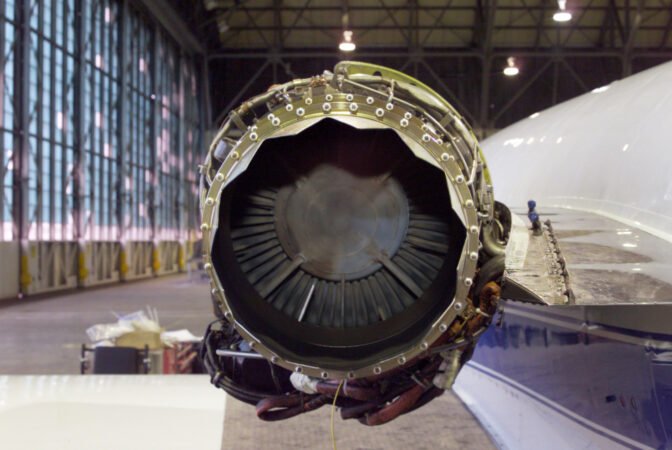Top Highlights
-
Groundbreaking Flight Test: On March 27, 2001, NASA conducted the first flight test of chevron nozzles on a Learjet, a crucial step toward significantly reducing aircraft noise levels.
-
Innovative Technology Development: Research since the 1950s led to the discovery that jagged-edged chevron nozzles could reduce engine noise by improving airflow, enabling quieter aircraft operation.
-
Promising Results with Minimal Impact: Tests showed that chevron nozzles reduced thrust by only 0.25%, demonstrating their potential as a noise-reduction solution without sacrificing performance.
- Industry Adoption and Recognition: The successful flight tests led to FAA certification of GE’s CF34-8 engine with chevron technology, now utilized in modern airliners like the 737 MAX and 787 Dreamliner, earning NASA an innovation award in 2002.
NASA’s Chevron Technology Has Quieted the Skies
NASA’s groundbreaking chevron technology has changed the way we think about aircraft noise. Since the dawn of jet travel, noise pollution has stirred concerns in communities near airports. However, recent advancements show promise in alleviating this issue.
In 2001, NASA began testing an innovative jagged-edged nozzle on a Learjet. This chevron nozzle demonstrated a significant capacity to reduce sound. Researchers aimed to lower noise levels for neighborhoods adjacent to busy flight paths. Historically, engine noise had dominated aviation discussions since the introduction of jet airliners in the 1950s.
With growing commercial air traffic, quieter engines became increasingly vital. Engine noise remained a problem even after new turbofan designs decreased sound levels. Thus, in the 1970s, NASA and manufacturers started exploring noise-reduction technologies. Researchers soon discovered military techniques used for disguise could also help with noise reduction.
By the 1990s, scientists at NASA found that a serrated edge, or chevron shape, offered effective sound control. They partnered with major engine manufacturers to analyze several nozzle designs. Testing in specialized laboratories confirmed that these chevron nozzles significantly reduced noise.
Remarkably, flight tests between 2001 and 2002 affirmed these findings. Even though initial tests showed little change in thrust, results demonstrated a notable decrease in noise levels. This led to the Federal Aviation Administration certifying new engines with chevron technology, revolutionizing design in commercial aviation.
Today, aircraft like the 737 MAX and the 787 Dreamliner utilize this technology. As communities strive for quieter skies, chevrons offer a viable solution. Not only do they enhance the quality of life for residents, but they also represent a significant step forward in aviation engineering. Thus, we witness the merging of science and technology, leading to quieter, more efficient air travel.
Continue Your Tech Journey
Stay informed on the revolutionary breakthroughs in Quantum Computing research.
Access comprehensive resources on technology by visiting Wikipedia.
SciV1

